
Salesperson training methods include a range of approaches such as on-the-job training, classroom instruction, online education, role-playing, mentorship, and workshops, each designed to enhance sales skills and performance. The article emphasizes that these varied methods cater to different learning styles and organizational needs, ultimately aiming to improve sales effectiveness and employee retention in a competitive market.
Sales training has become a crucial component for organizations aiming to thrive in an increasingly competitive marketplace. With diverse methodologies available, each tailored to specific learning preferences and business objectives, companies must navigate the complexities of training their sales teams effectively.
From on-the-job training that fosters immediate skill application to online platforms that offer flexibility, the array of options is vast. As businesses recognize the importance of aligning training with a positive employee experience, understanding and implementing these varied approaches is essential for driving performance and reducing turnover.
This article delves into the key sales training methods, effective implementation strategies, and the role of leadership, while also exploring future trends that will shape the landscape of sales training in the coming years.
Salesperson training methods encompass a variety of approaches in commerce, each tailored to address different learning preferences and organizational objectives, particularly in the face of pressing challenges. The key methodologies include:
On-the-Job Training: This hands-on approach immerses marketing professionals in real-world scenarios, enabling them to apply skills immediately.
This method has been demonstrated to improve retention rates and increase confidence among sales groups, especially vital for those having difficulty meeting quotas. For representatives encountering challenges, utilizing the MAGICSales compatibility test can help identify areas for improvement.
Classroom Training: Traditional classroom settings foster structured environments for learning, where foundational techniques are imparted through lectures and collaborative discussions.
This method not only builds essential knowledge but also promotes teamwork and communication skills, vital for competing in today's market.
Online Education: The rise of digital technology has led to the increasing adoption of online education programs.
These platforms provide flexibility and customization, enabling representatives to learn at their own pace, which is especially advantageous for remote teams confronting competition from newcomers in the industry.
Role-Playing: This interactive technique immerses salespeople in simulated scenarios, enhancing their ability to handle real-life situations with increased confidence and effectiveness, essential for adapting to market changes.
Mentorship Programs: By pairing less experienced representatives with seasoned professionals, organizations facilitate knowledge transfer and provide tailored guidance that significantly enhances skill development, addressing the challenge of hiring top talent.
Workshops and Seminars: Short-term, focused educational sessions, such as workshops, offer intensive learning experiences targeting specific skills or techniques, thereby enriching the overall knowledge repertoire.
The Sales Bond Academy is a remarkable asset for these workshops, offering innovative development systems that empower sales groups.
These varied salesperson training methods not only address the distinct requirements of sales groups but also correspond with the latest trends in sales education for 2024. With the global outsourcing market valued at $85.6 billion in 2018, the significance of efficient sales education in a competitive environment is crucial. Recent developments indicate that organizations are increasingly recognizing the importance of aligning educational goals with a positive employee experience.
In fact, 92% of survey participants support education that encourages diversity, engagement, and a growth mindset, highlighting the necessity for contemporary sales initiatives that cultivate an inclusive and supportive environment. By comprehending and applying these diverse salesperson training methods, businesses can enhance their development programs to boost performance and decrease turnover, which is vital considering the harmful impacts of insufficient preparation on sales efficiency. Anja Jeftovic, a Marketing Manager at TaskDrive, highlights the importance of fostering a positive employee experience, which is crucial for retaining top talent and improving overall performance.
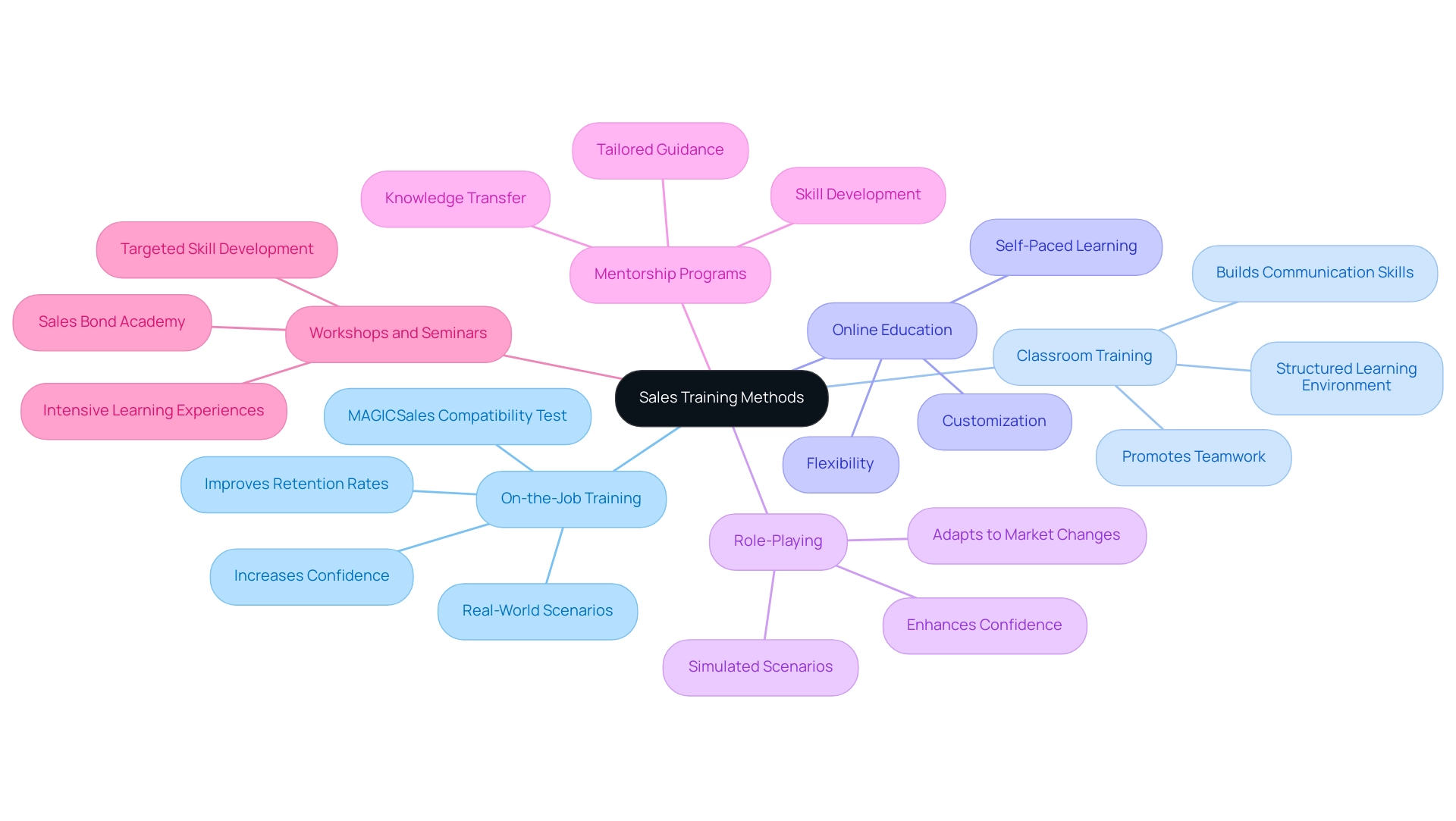
The successful implementation of sales training techniques encompasses several essential strategies:
By embracing these strategies and incorporating concepts from consultative selling and credible objections coaching, organizations can develop a strong sales development initiative through salesperson training methods that not only improve the skills of their salesforce but also boost overall revenue performance, ensuring a competitive advantage in an increasingly intricate market.
FAQs: For further clarity, potential inquiries about the courses can be addressed through our FAQs, which cover common questions regarding pricing, content, and implementation strategies. It is also essential to remember that when providing proof, it should not be a 'word salad' or 'sales talk,' as many sellers inadvertently try to do.
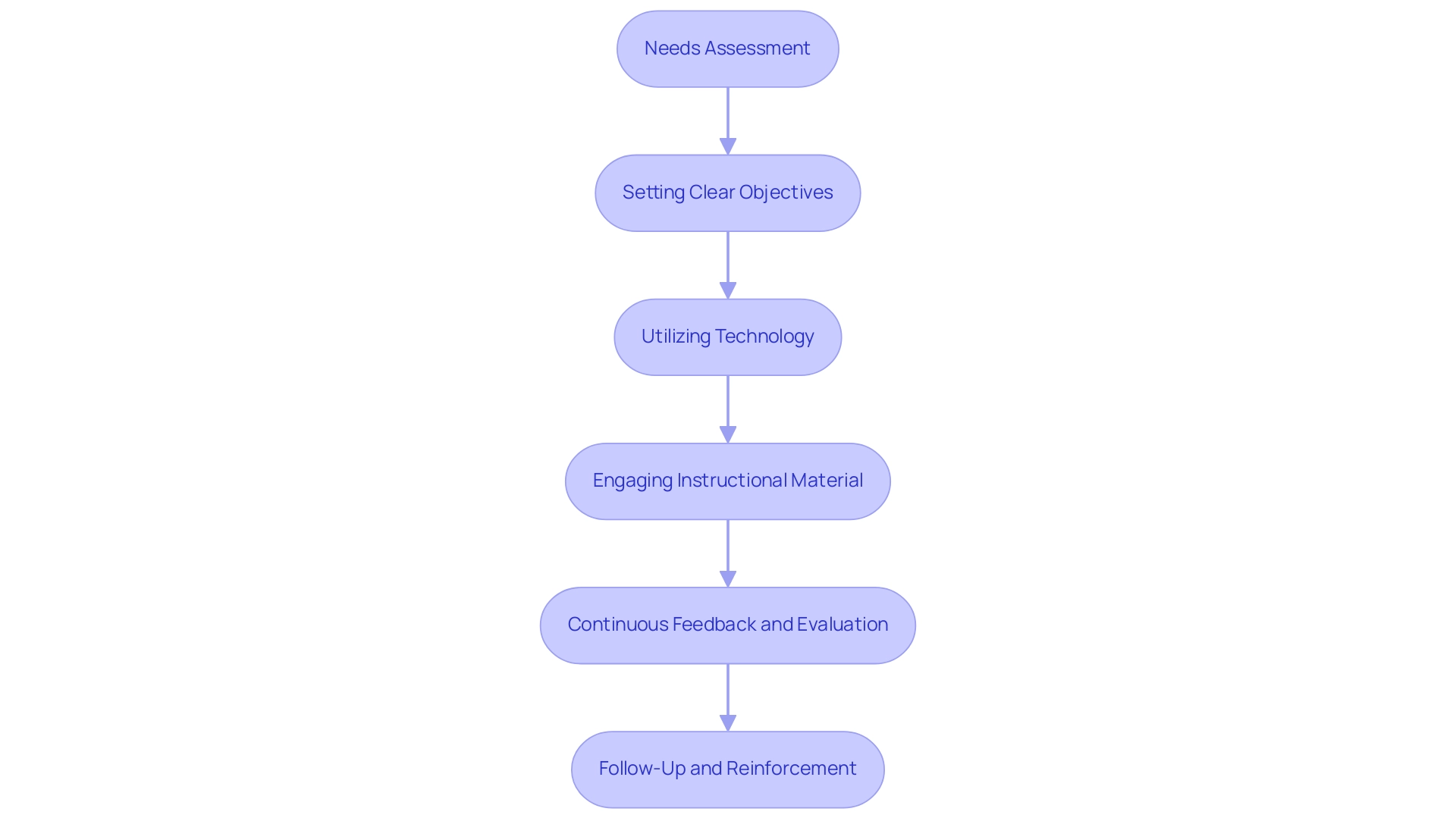
Assessing the impact of commercial development initiatives is crucial for guaranteeing alignment with organizational objectives and optimizing sales results. Pods Asia's MAGIC Sales Academy provides a comprehensive annual membership package priced at $150 per month, which includes customized strategies and ongoing support aimed at transforming enterprise transactions. Key methods for evaluation include:
A relevant case study, titled 'Door-to-Door Sales Resilience,' highlights that successful D2D strategies combine high-volume prospecting with adaptive pitches to build trust and drive revenue, generating nearly $30 billion annually. By utilizing these assessment techniques, organizations can consistently enhance their salesperson training methods, ensuring that these initiatives remain effective and aligned with overall revenue goals. This ongoing assessment is particularly relevant in a dynamic market projected to grow at an annual rate of 6.4% through 2030, as reported by Grand View Research.
Furthermore, Knowledge Anywhere provides knowledge in online education and eLearning to assist in enhancing sales instruction, further boosting the efficiency of these initiatives.
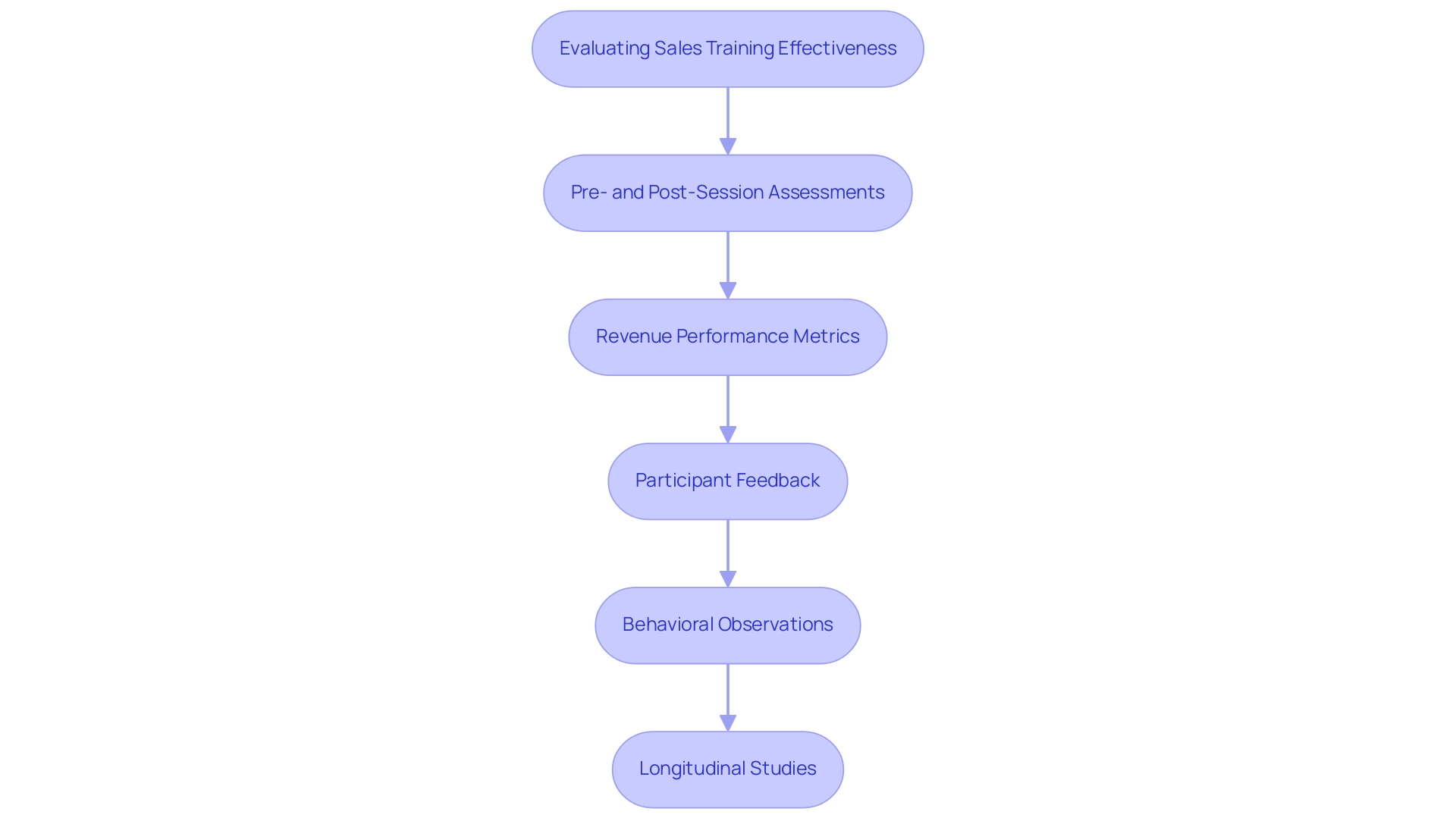
The dedication of leadership is crucial in promoting the success of sales education initiatives. Leaders play several key roles that significantly influence development outcomes:
By recognizing the vital role of leadership in shaping salesperson training methods, organizations can create a supportive environment that improves the efficacy and longevity of their educational efforts. As mentioned by industry specialists, a clearly articulated vision and dedication from leadership can greatly enhance the overall success of salesperson training methods and sales development initiatives. To explore more about improving your selling skills, consider accessing the downloadable content from 'Magical Selling' that provides comprehensive strategies for credibility, solution selling, and account growth.
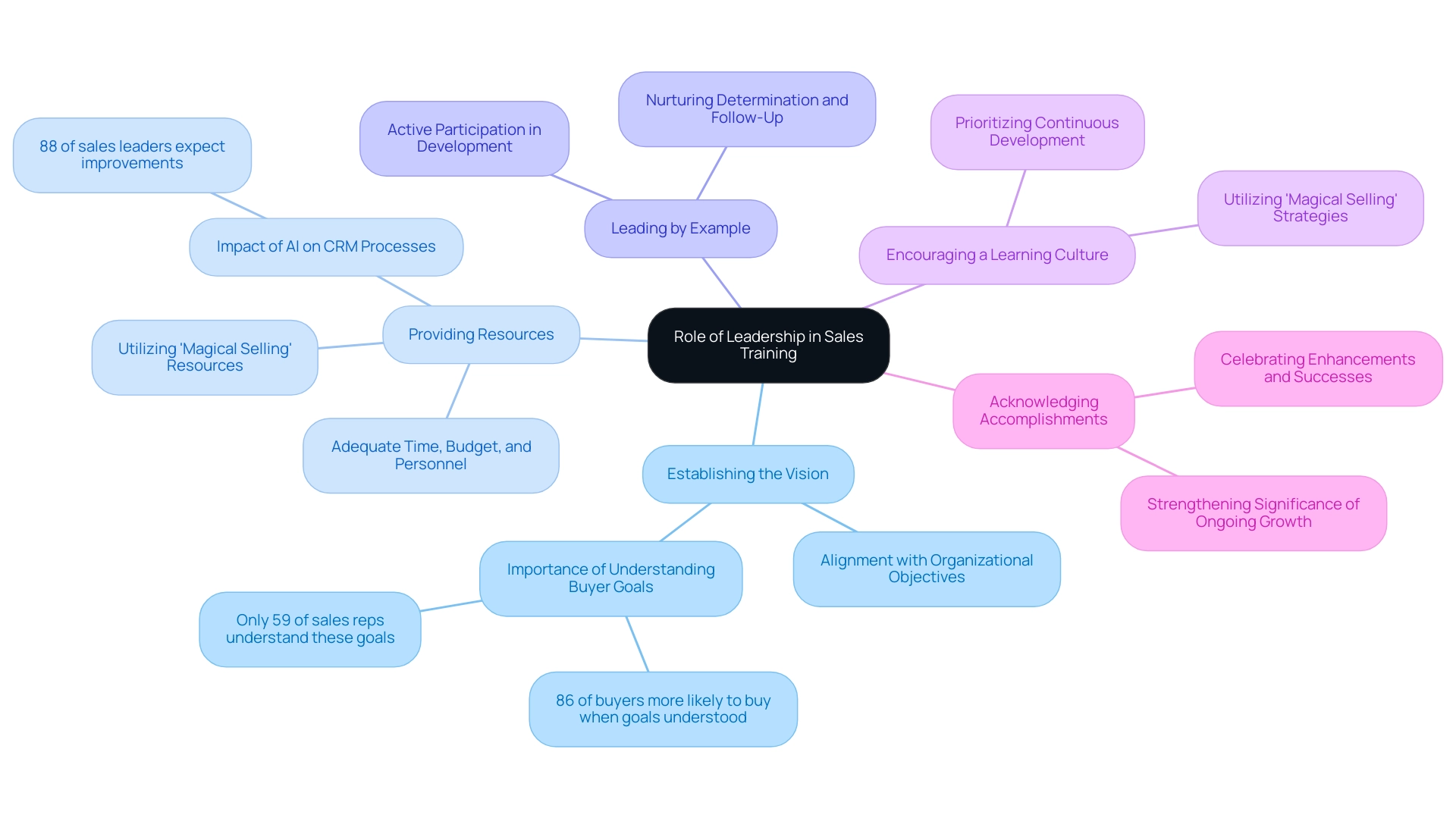
The sales landscape is experiencing significant transformation, with several key trends influencing the future of sales education:
Grasping these trends allows organizations to modify their salesperson training methods effectively, ensuring they meet changing demands and enhance overall performance. Furthermore, by implementing adaptable win plans designed for particular market challenges and optimizing revenue strategies through account segmentation tactics, companies can significantly enhance productivity. The transformative strategies provided by Power of Disruptive Solutions, including the Bond Academy, empower teams for sustainable growth and success, amplifying productivity by up to 8X.
Moreover, the Service-as-a-Service model provides startups and scale-ups with the tools needed for market expansion, reinforcing the necessity of innovative training solutions in today's dynamic business environment. Finally, addressing Total Cost of Ownership (TCO) through legacy tech modernization ensures enterprises can achieve cost efficiency while enhancing their sales capabilities.
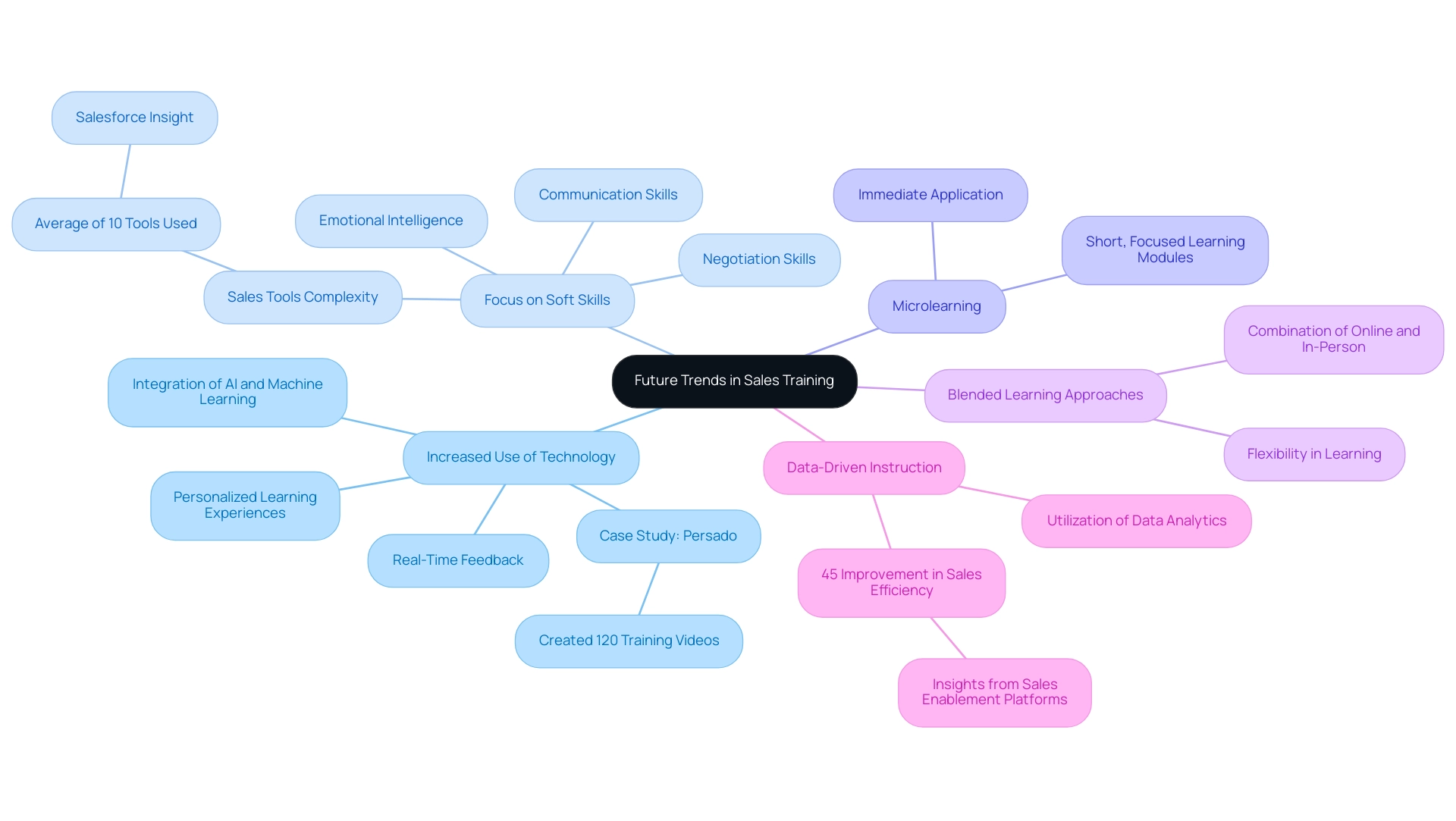
Sales training is a multifaceted endeavor that requires careful consideration of diverse methodologies and strategic implementation. The exploration of various training techniques, such as on-the-job training, classroom settings, and online platforms, illustrates the importance of tailoring approaches to meet the unique needs of sales teams. By recognizing the value of mentorship programs, role-playing, and workshops, organizations can create a comprehensive training framework that enhances skill development and fosters a positive employee experience.
Effective implementation of these training methods hinges on several critical strategies. Conducting a thorough needs assessment, setting clear objectives, and utilizing technology are essential steps to ensure that training initiatives are relevant and impactful. Engaging content, continuous feedback, and reinforcement post-training are vital for the sustained application of newly acquired skills. Such a structured approach not only improves individual performance but also drives overall sales success.
Leadership plays a pivotal role in the success of sales training programs. By setting a clear vision, providing necessary resources, and fostering a culture of learning, leaders can significantly influence the effectiveness of training efforts. Recognizing and celebrating achievements further motivates sales personnel, reinforcing the importance of ongoing development.
As the sales landscape evolves, embracing future trends such as technology integration, a focus on soft skills, and data-driven training will be crucial. Organizations that adapt to these changes will enhance their training programs, ensuring they remain competitive and responsive to market demands. Ultimately, a commitment to continuous improvement in sales training is essential for achieving long-term success and maximizing sales performance in an increasingly complex environment.
What are the main salesperson training methods discussed in the article?
The main salesperson training methods include On-the-Job Training, Classroom Training, Online Education, Role-Playing, Mentorship Programs, and Workshops and Seminars.
How does On-the-Job Training benefit sales professionals?
On-the-Job Training allows sales professionals to apply skills in real-world scenarios, improving retention rates and confidence, particularly for those struggling to meet quotas.
What is the purpose of Classroom Training in salesperson development?
Classroom Training provides a structured environment for learning foundational techniques through lectures and discussions, fostering teamwork and communication skills essential for competition.
What advantages does Online Education offer for sales training?
Online Education offers flexibility and customization, allowing representatives to learn at their own pace, which is particularly beneficial for remote teams facing industry competition.
How does Role-Playing enhance sales training?
Role-Playing immerses salespeople in simulated scenarios to improve their confidence and effectiveness in handling real-life situations, which is crucial for adapting to market changes.
What is the goal of Mentorship Programs in sales training?
Mentorship Programs pair less experienced representatives with seasoned professionals to facilitate knowledge transfer and provide tailored guidance, enhancing skill development.
What are Workshops and Seminars, and how do they contribute to sales training?
Workshops and Seminars are short-term educational sessions that focus on specific skills or techniques, enriching participants' knowledge and often utilizing programs like the Sales Bond Academy.
What is the importance of conducting a Needs Assessment before sales training?
A Needs Assessment identifies specific skills deficiencies and development needs, ensuring that the training provided is relevant and focused on the unique requirements of the sales group.
Why is setting clear objectives crucial for sales training initiatives?
Clear objectives help evaluate the success of training initiatives by focusing on measurable outcomes such as improving conversion rates or enhancing product knowledge.
How does technology enhance the sales training process?
Technology, particularly Learning Management Systems (LMS), streamlines the development process by facilitating progress tracking and providing on-demand resources for professionals.
Why is engaging instructional material important in sales training?
Engaging instructional material ensures that educational resources are captivating and relevant, which boosts learning retention and application among sales personnel.
What role does continuous feedback and evaluation play in sales training?
Continuous feedback helps salespeople recognize their progress and identify improvement areas, while regular assessments enhance future courses to meet changing requirements.
What is the significance of Follow-Up and Reinforcement after training?
Follow-Up and Reinforcement ensure that skills acquired during training are effectively applied in the field through refresher courses, coaching, and performance reviews, promoting continuous development.